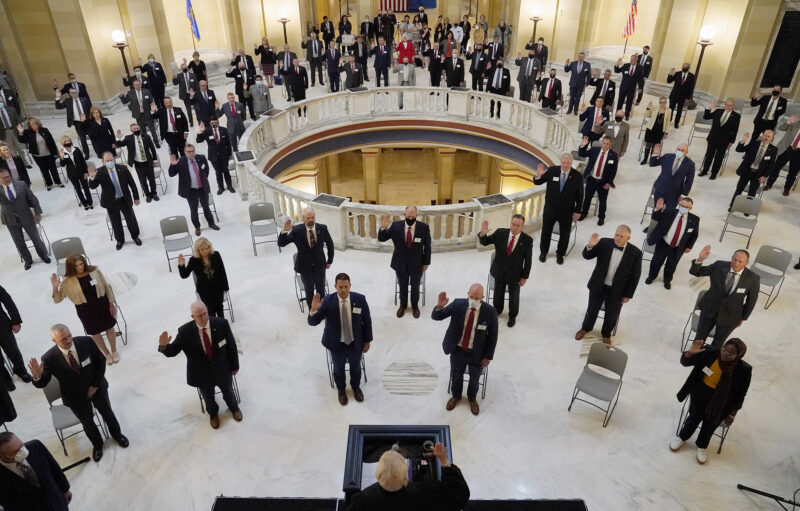
The pandemic relief bill signed by President Joe Biden this past spring sent $350 billion — an astounding amount — to states and local governments in what was labeled a “rescue” plan. Officials across the country had urged immediate action as Congress debated the measure.
But as AP State Government Team reporter David Lieb pored over reports recently filed with the federal government for every state and nearly 100 of the largest U.S. cities, he discovered little that met the definition of rescue from a fiscal cliff: The cities had spent just 8.5% of their federal relief and the states even less — just 2.5%.
An AP analysis shows that states and cities so far have spent just a small fraction of the money given to them under the Democrats’ American Rescue Plan. @DavidALieb https://t.co/1HnmPdOliZ
— The Associated Press (@AP) October 3, 2021
Pittsburgh was among many cities that reported spending none of its funding yet. This despite the mayor joining a chorus of other Pennsylvania mayors last February: “Our communities cannot wait another day,” they wrote.
Further,while states and cities were given about two more years to allocate the funds,Lieb found that the state and local governments were reporting future spending plans for just 40% of the money,begging the question of how urgently it was needed.
As Lieb gathered and analyzed the reports,data journalist Camille Fassett prepared a data drop that AP customers could use to localize their own reporting. The pair’s work was the latest in an ongoing series of accountability stories being led by AP’s state government and data teams tracking the hundreds of billions of dollars the federal government has sent to states, local governments and school districts since the virus outbreak in the U.S.

Lieb’s reporting also revealed an issue of transparency: Although the U.S. Treasury Department required governments to account for the funds on a prominent,public-facing web page,some states didn’t post at all, and some cities told him he would have to file a formal records request to get the data.
The work was the latest in an ongoing series of accountability stories led by AP’s state government and data teams tracking federal pandemic-related aid.
Play for the story was outstanding. It landed on the front pages of dozens of AP’s biggest customers,online and print,and drew readership on AP News.
For distinctive accountability journalism that delivered on both the national and local level, Lieb and Fassett earn AP’s Best of Week — First Winner.
Visit AP.org to request a trial subscription to AP’s video,photo and text services.
For breaking news, visit apnews.com





